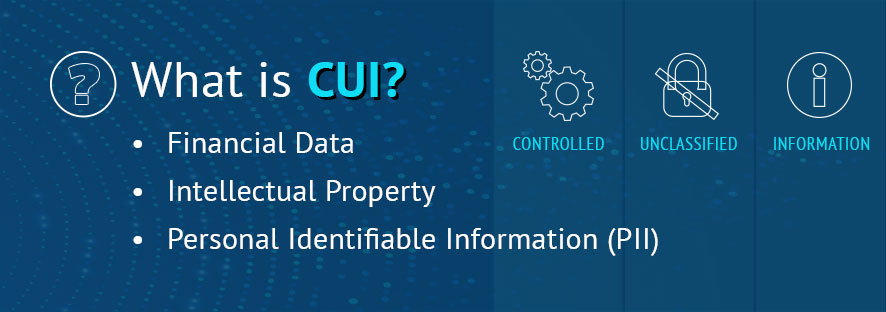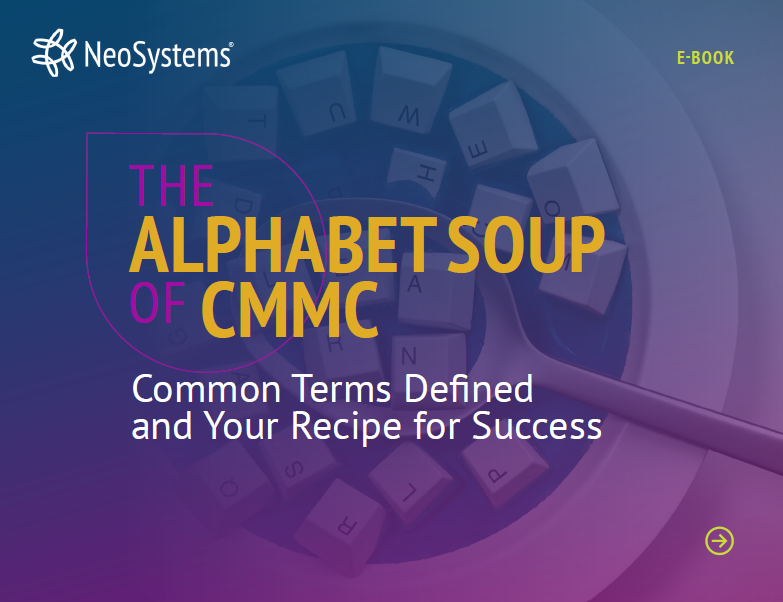One of the biggest IT challenges for government contractors is confidently handling vast amounts of sensitive information that must be protected from unauthorized access or disclosure. Among these crucial data types is Controlled Unclassified Information (CUI), which holds significant importance for both government agencies and private entities. In this section, we will cover what CUI is, why it is important, the different types of CUI, how to identify it, the distinction between Federal Contract Information (FCI) and CUI, the relationship between CMMC and CUI, and best practices for protecting CUI.
What Is CUI?
What Is CUI?
Controlled Unclassified Information (CUI) refers to unclassified information that requires safeguarding or dissemination controls in order to protect its confidentiality, integrity, and availability. While not classified, CUI carries sensitive attributes that make its protection crucial to national security, privacy, or economic interests. CUI can include a broad range of information types, such as financial data, intellectual property, personal identifiable information (PII), and more.
Why Is CUI Important?
CUI is important for several reasons:
- National Security: CUI encompasses information that, if compromised, could harm national security, defense systems, or critical infrastructure. Protecting CUI ensures the integrity of vital operations.
- Privacy and Identity Protection: CUI often includes personally identifiable information (PII) and sensitive personal data. By safeguarding CUI, organizations uphold individuals’ privacy rights and mitigate the risk of identity theft or fraud.
- Economic Interests: CUI can encompass trade secrets, intellectual property, or financial information that, if exposed, could have severe financial consequences for businesses and the economy.
- Compliance and Legal Requirements: Many organizations are legally bound to protect CUI due to contractual obligations, industry regulations, or government mandates. Failure to comply may result in legal repercussions or loss of business opportunities.
Types Of CUI
CUI can encompass various information types, including but not limited to:
- Personally Identifiable Information (PII): This includes data such as Social Security numbers, driver’s license numbers, or financial information that can be used to identify an individual.
- Financial Information: CUI can involve financial records, banking details, credit card information, or other sensitive financial data.
- Proprietary or Trade Secrets: This category covers information related to business operations, product designs, formulas, algorithms, or any confidential information that gives a competitive advantage.
- Protected Health Information (PHI): CUI may include sensitive medical or healthcare-related information covered by Health Insurance Portability and Accountability Act (HIPAA) regulations.
- Law Enforcement Sensitive (LES) Information: CUI can involve sensitive law enforcement data that, if compromised, could impede investigations or endanger lives.
Identifying CUI
Properly identifying CUI within an organization is crucial for implementing adequate security measures. Organizations should:
- Review Regulatory Guidelines: Familiarize yourself with relevant regulations and guidelines that outline the types of information considered CUI in your industry or field of operation.
- Conduct Data Classification Assessments: Identify and categorize data within your organization based on its sensitivity, ensuring that CUI is appropriately labeled and protected.
- Consult with Subject Matter Experts: Seek guidance from experts or legal advisors to determine what information should be classified as CUI based on your specific context and requirements.
FCI Vs CUI
It’s important to distinguish between Federal Contract Information (FCI) and CUI. FCI refers to unclassified information provided by or generated for the government under a federal contract. FCI does not include information that is intended for public release. CUI encompasses a broader range of sensitive information that requires protection under various laws, regulations, or government policies. CUI can include FCI but also extends to other categories of sensitive information beyond federal contracts.
CMMC And CUI
The Cybersecurity Maturity Model Certification (CMMC) is a framework developed by the Department of Defense (DoD) to assess and enhance the cybersecurity posture of organizations within the defense industrial base (DIB). While CMMC focuses on overall cybersecurity readiness, it includes specific requirements for protecting CUI. Organizations seeking to participate in DoD contracts must achieve the appropriate CMMC level that aligns with the type and sensitivity of the CUI they handle.
Looking to learn more about CMMC? Get started with our free guide covering terminology and more.
How To Protect CUI
Protecting CUI requires a comprehensive approach that combines people, processes, and technology. Here are essential steps to safeguard CUI within your organization:
- Implement Strong Access Controls: Restrict access to CUI to authorized personnel only. Use strong authentication mechanisms, enforce least privilege principles, and regularly review and update access permissions.
- Encrypt CUI: Implement robust encryption mechanisms to protect CUI in transit and at rest. Encrypt sensitive data using industry-standard algorithms and ensure encryption keys are properly managed.
- Train and Educate Employees: Provide comprehensive cybersecurity training to employees to create awareness about the importance of protecting CUI. Educate them on secure data handling practices, social engineering threats, and incident reporting procedures.
- Implement Secure Configuration Practices: Ensure that systems and devices handling CUI are configured securely. Regularly apply security patches, disable unnecessary services, and use strong passwords and multi-factor authentication.
- Conduct Regular Security Assessments: Perform periodic assessments, vulnerability scans, and penetration tests to identify and remediate security vulnerabilities. Monitor network traffic, logs, and system activities for anomalous behavior.
- Incident Response Planning: Develop an incident response plan to effectively address security incidents involving CUI. Establish communication channels, incident handling procedures, and a mechanism for reporting and documenting incidents.
- Third-Party Risk Management: Assess the cybersecurity practices of third-party vendors and service providers who handle CUI on your behalf. Ensure they meet the necessary security requirements and implement appropriate safeguards.
How To Mark CUI
Properly marking CUI documents and files helps ensure their protection and appropriate handling. Consider the following guidelines for marking CUI:
- Apply CUI Designations: Clearly indicate that the information is CUI by using appropriate designations such as “Controlled Unclassified Information” or “CUI.”
- Use Appropriate Markings: Apply CUI markings to the document or file, such as headers, footers, watermarks, or banners, to visually indicate its sensitivity.
- Include Handling Instructions: Provide instructions for handling and protecting CUI, such as limitations on dissemination, storage requirements, and specific access controls.
- Train Employees on Marking Requirements: Educate employees on the proper marking procedures for CUI documents and files. Emphasize the importance of accurately and consistently applying the designated markings.
CUI: Safeguarding Sensitive Information
By implementing robust security measures, raising employee awareness, and following best practices, your organization can protect CUI, maintain regulatory compliance, and safeguard the interests of your stakeholders. Prioritize the protection of CUI and embark on a secure and compliant journey today.
Make the Move
Ready to start down the road to CMMC certification? Contact NeoSystems today to learn more about our
CMMC compliance solution & services!













